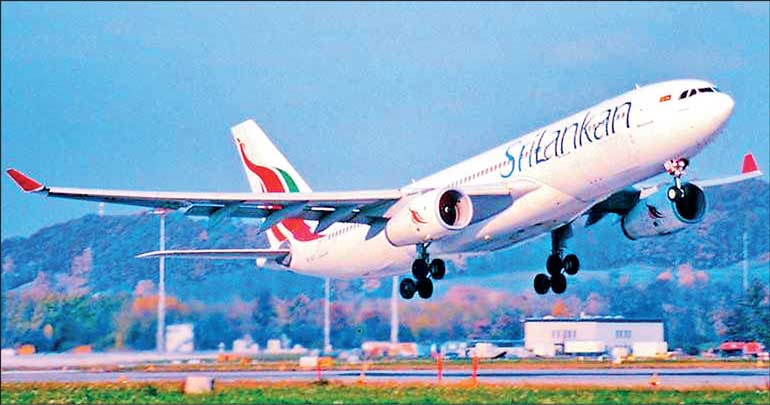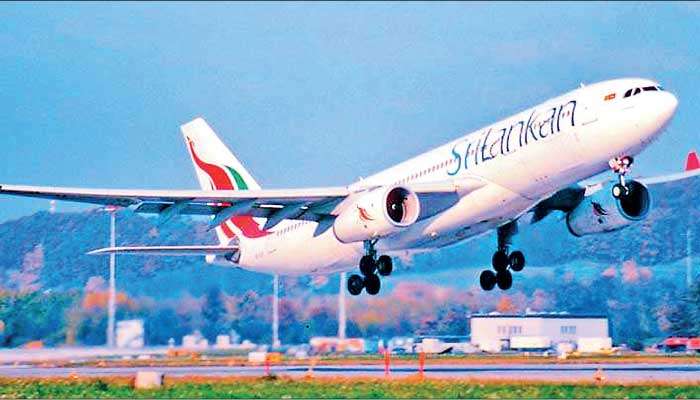
The infusion of private capital and expertise presents a unique opportunity to address longstanding issues and set the airline on a path to sustainable growth
By Kanchana Kodituwakku
The Sri Lankan Government is considering a transformative move by privatising SriLankan Airlines, the nation’s beleaguered flag carrier. If this strategic plan proceeds, it could potentially act as a catalyst for revitalising the airline, which has faced financial woes, operational inefficiencies, and competitive pressures for over a decade. This analytical piece explores the potential outcomes of privatisation, the possible benefits, and the strategic roadmap that could be implemented by new private management.
The struggles of SriLankan Airlines
If privatisation is chosen, it will be in response to years of financial instability and operational challenges. SriLankan Airlines has been grappling with mounting debt, which has hindered necessary investments in fleet modernisation, technological upgrades, and network expansion. These financial difficulties have also led to subpar customer service and significant operational inefficiencies.
Outdated management practices have resulted in high operational costs and low productivity, further compounding the airline’s struggles. These inefficiencies, coupled with intense regional competition, have eroded the airline’s market share and tarnished its reputation.
The case for privatisation
The potential privatisation of SriLankan Airlines is rooted in the belief that private investment and management could introduce much-needed financial discipline, operational efficiency, and market responsiveness. If privatisation proceeds, several critical benefits might be realised:
Financial stability: Private capital could stabilise the airline’s finances. This financial boost might enable SriLankan Airlines to restructure its debt, invest in fleet modernisation, and expand its route network. Addressing liquidity issues could lay the groundwork for sustainable growth and profitability.
Operational efficiency: Private ownership often brings a focus on lean management practices and cost control. For SriLankan Airlines, this could mean significant reductions in wastage and optimised resource utilisation. Streamlined operations might enhance productivity and reduce turnaround times, vital for improving the airline’s competitiveness.
Enhanced competitiveness: Privatisation could provide the agility needed to adapt to market dynamics swiftly. The airline might be better positioned to forge strategic partnerships, expand its route network, and offer competitive pricing. This responsiveness is crucial for regaining and maintaining a competitive edge in the regional aviation market.
Improved customer experience: A healthier financial and operational footing is likely to translate into a superior customer experience. Investments in modern aircraft, enhanced in-flight services, and streamlined operations could significantly elevate the travel experience for passengers. This customer-centric approach might be key in rebuilding the airline’s reputation.
Strategic vision of potential private management
If privatisation proceeds, the new private consortium could bring industry expertise and a strategic vision aimed at turning the airline into a profitable and sustainable entity. Their comprehensive plan might include several key initiatives:
Fleet modernisation: A substantial investment in upgrading the airline’s fleet could be a top priority. This might include acquiring new, fuel-efficient aircraft to replace older models, thereby reducing maintenance costs and improving fuel efficiency. A modern fleet could not only enhance operational efficiency but also attract passengers with better comfort and reliability.
Route optimisation: The new management could conduct a thorough review of the airline’s route network to identify profitable and strategically important routes. This strategy might involve expanding into high-demand markets while discontinuing underperforming routes, thus maximising revenue potential.
Technological upgrades: Modernising the airline’s technological infrastructure could be crucial for enhancing operational efficiency and customer satisfaction. The plan might include implementing advanced booking systems, state-of-the-art maintenance software, and leveraging data analytics to streamline operations and improve service delivery.
Employee training and development: Recognising the importance of its workforce, the new management might invest in comprehensive training and development programs. This initiative could ensure that employees are equipped with the skills and knowledge necessary to deliver superior service and operate efficiently.
Brand revitalisation: A robust marketing and rebranding campaign might be on the agenda to reposition SriLankan Airlines as a preferred carrier in the region. The campaign could emphasise the airline’s unique value propositions and commitment to exceptional service, crucial for attracting and retaining customers.
Sustainability initiatives: The new management might be committed to implementing sustainable practices across all operations. This could include adopting green technologies, reducing carbon emissions, and promoting eco-friendly policies. Sustainability efforts could enhance the airline’s reputation and align it with the growing demand for environmentally responsible travel options.
Strategic plan for revival
The private consortium’s strategic plan for SriLankan Airlines might include several detailed measures to ensure a successful turnaround:
1. Financial restructuring and investment: The initial focus might be on financial restructuring, involving negotiations with creditors to restructure existing debt and secure new financing. This fresh capital could be directed towards critical areas such as fleet acquisition, technological upgrades, and marketing initiatives.
2. Strategic partnerships and alliances: Establishing strategic partnerships and alliances might be a priority. These collaborations could enable SriLankan Airlines to expand its network, share resources, and access new markets. Partnerships with other airlines might enhance connectivity and provide passengers with more travel options.
3. Customer-centric approach: A customer-centric approach could drive business growth. Extensive market research might be conducted to understand passenger preferences and needs, leading to tailored marketing campaigns, loyalty programs, and personalised services to enhance customer satisfaction and loyalty.
4. Cost management and efficiency: Rigorous cost management measures might be implemented to reduce operational expenses. This could include renegotiating supplier contracts, optimising fuel procurement, and improving maintenance processes. Efficiency improvements might be sought in all aspects of operations.
5. Digital transformation: Digital transformation could be at the core of the airline’s revival strategy. Investments in cutting-edge technologies such as artificial intelligence, data analytics, and cloud computing might streamline operations, enhance decision-making, and improve customer service.
6. Focus on core competencies: The management might strengthen the airline’s core competencies, including safety, reliability, and service excellence. By leveraging its strengths, SriLankan Airlines could differentiate itself from competitors and build a loyal customer base.
7. Sustainability and corporate social responsibility: The consortium might be committed to sustainable practices, including reducing carbon emissions, minimising waste, and promoting eco-friendly initiatives. Corporate social responsibility programs could support local communities and contribute to social and environmental causes.
8. Continuous improvement and innovation: A culture of continuous improvement and innovation might be fostered. Regular performance reviews, feedback mechanisms, and employee engagement initiatives could drive innovation and excellence.
Potential challenges and risks
Despite the promising outlook, the privatisation and subsequent turnaround of SriLankan Airlines are not without risks and challenges. The transition from public to private ownership can be complex, involving significant cultural and operational changes. The new management will need to navigate potential resistance from employees and stakeholders accustomed to the previous regime. Effective communication and change management strategies will be essential to ensure a smooth transition.
Moreover, the airline industry is inherently volatile, influenced by fluctuating fuel prices, geopolitical tensions, and economic cycles. The new management must be prepared to adapt to these external factors and implement risk mitigation strategies to safeguard the airline’s stability.
Broader implications for the industry
The privatisation of SriLankan Airlines could have broader implications for the aviation industry and state-owned enterprises in Sri Lanka and beyond. If successful, this move could serve as a model for other struggling national carriers and state-owned entities, demonstrating the potential benefits of private investment and management. It could also encourage policymakers to consider similar strategies for other sectors, fostering a more dynamic and competitive business environment.
Privatisation, however, must be approached with caution. Ensuring that the process is transparent, inclusive, and aligned with national interests is crucial. The Government must establish robust regulatory frameworks to oversee the privatised entity and safeguard public interest. This includes monitoring compliance with safety, labour, and environmental standards, as well as ensuring fair competition in the market.
The road ahead
The journey ahead for SriLankan Airlines is filled with both opportunities and challenges. The infusion of private capital and expertise presents a unique opportunity to address longstanding issues and set the airline on a path to sustainable growth. With a clear strategic vision and commitment to excellence, the new management has the potential to transform SriLankan Airlines into a profitable and competitive carrier.
As the airline navigates this transformative phase, it will be essential to maintain a balance between achieving commercial success and fulfilling its role as a national carrier. This includes upholding its commitment to providing quality service, connecting Sri Lanka to the world, and contributing to the country’s economic development. The success of this endeavour will ultimately depend on the ability to execute the strategic plan effectively, adapt to changing market conditions, and build a resilient, customer-focused airline.
(The writer is a Communications Strategist.)
